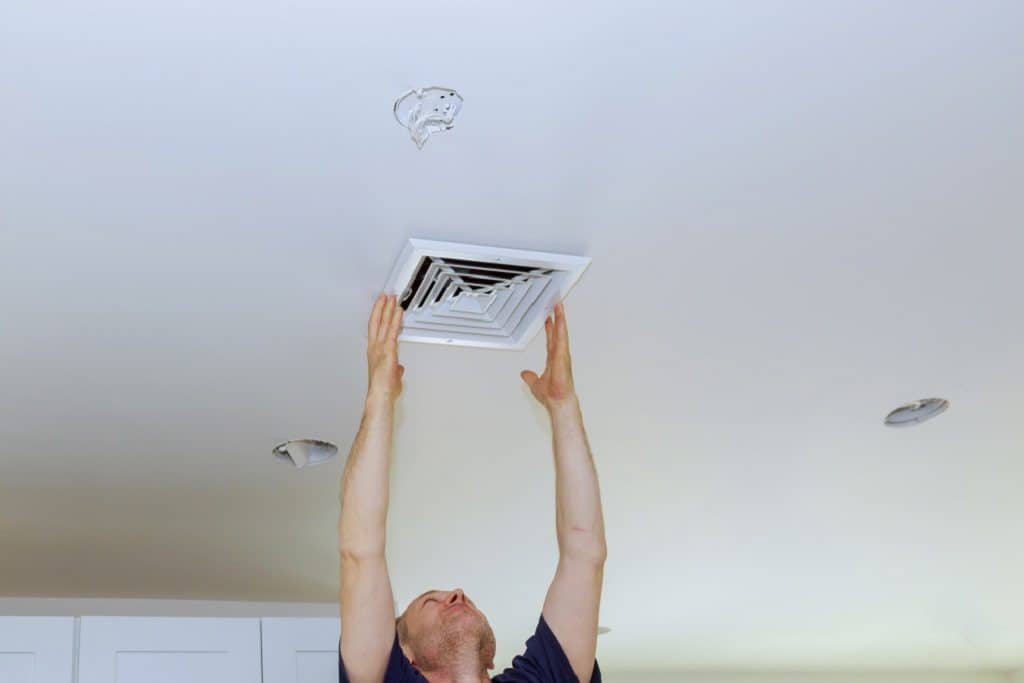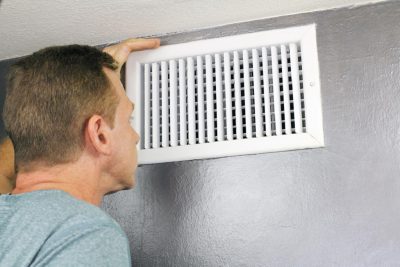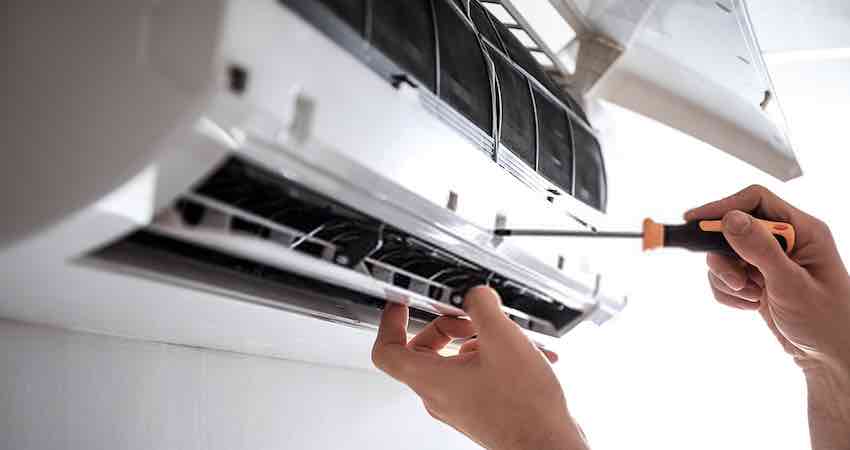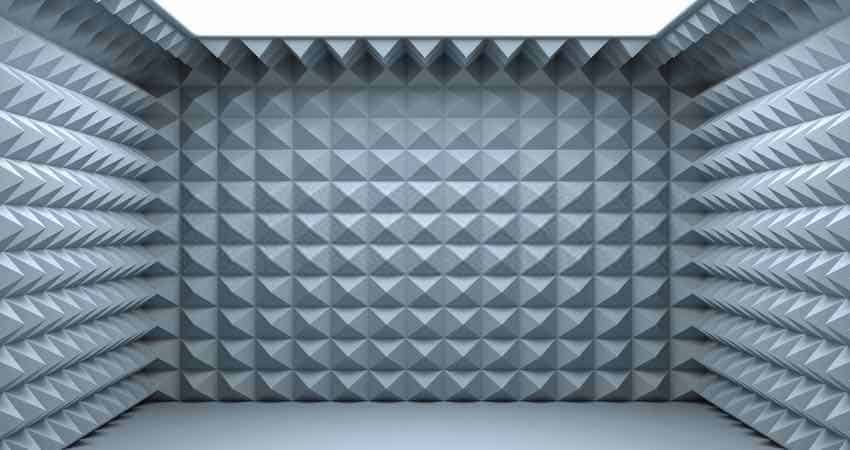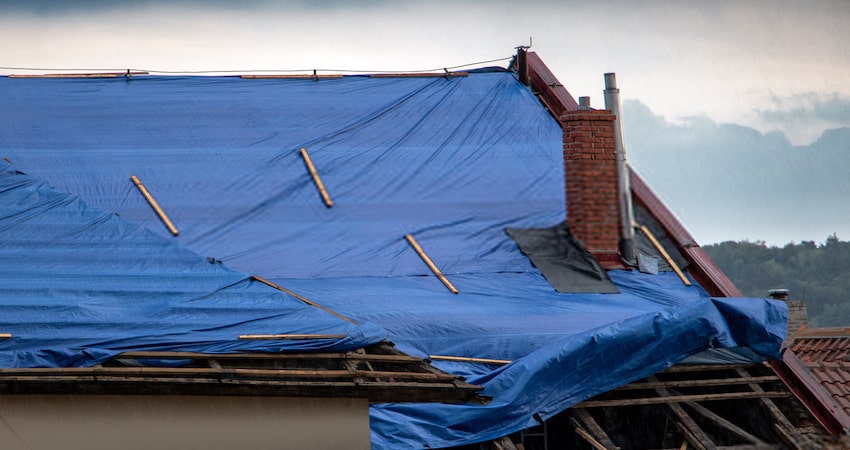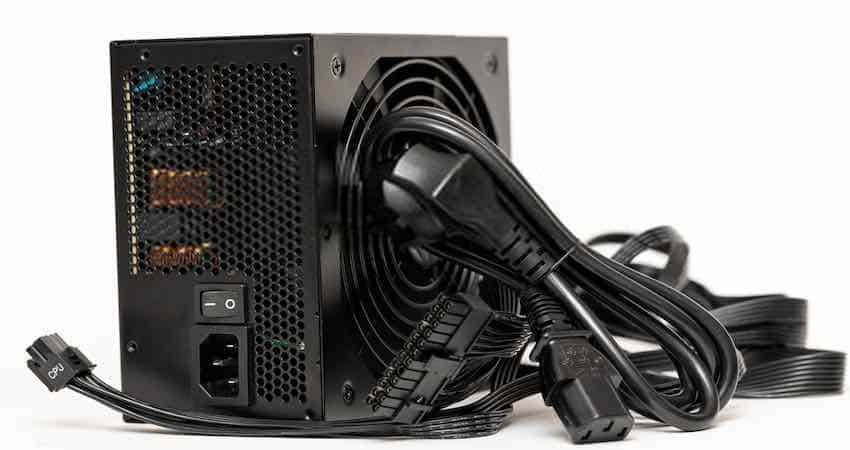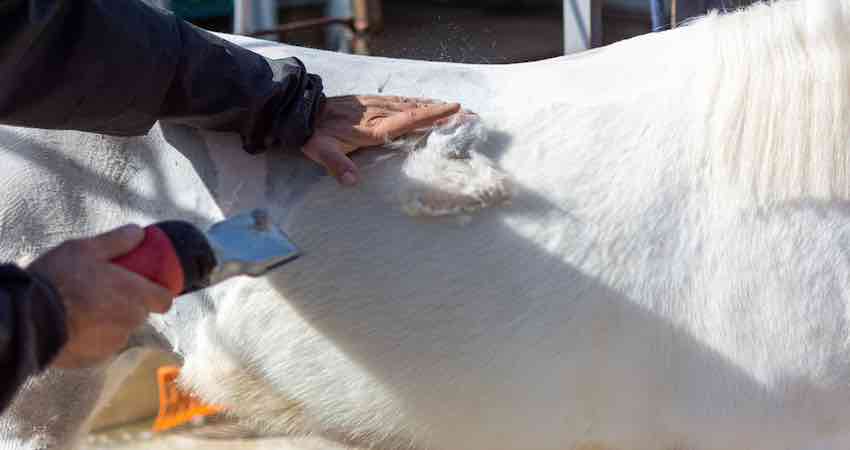As an Amazon Associate, we earn from qualifying purchases at no extra cost to you.
Nothing is more important in a house that clean airflow. This is the reason most houses have air vents. However, the vents can be a nuisance.
Sometimes the vents produce unbearable noises. After all, the sound should not bother you. Thanks to soundproofing.
In this article, we will show you the most effective soundproofing techniques for your air vents. But before we discuss the methods, let’s first discuss about air vents and the noises they produce.
Keep on reading for amazing insights about how to soundproof air vents.
The Common Air Vents in Every Home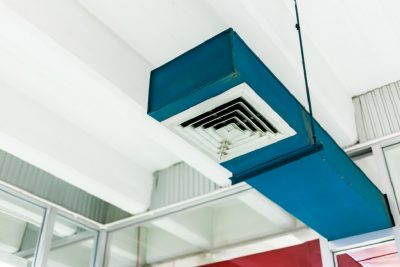
There are two common air vents to find in every house.
Ventilation Vents
It’s an above door or window air vent. It gives cross ventilation. As compared to HVAC air vents its quite short.
Soundproofing ventilation vents is easy. All you need to do is cover them with a magnet vent cover. Alternatively, you can cover them with curtains or other materials.
HVAC Air Vents
HVAC air vents connect to an air conditioning unit. They have a transfer and return air vents. One outlet is designated for transferring air into the room from an air conditioning unit. The other air vent is called return vent. It sucks all the warm air in the room and circulates it to the air conditioning unit for cooling or heating.
The two vents work together to heat or cool a house. The process of transferring and sucking air from the room produces irritating sounds.
Why Ventilate Your Room?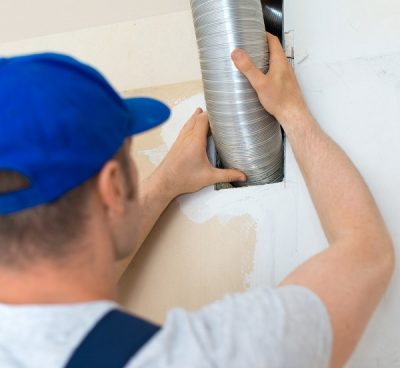
Ventilation system plays an important role in the house. Proper ventilation prevents air contamination in the home. It improves the health being of a house.
Proper ventilation gets rid of unwanted smells from the kitchen, toilets, and pets. It prevents the growth of molds in a house.
Vents control the house moisture level. Excess moisture is a threat to a house. A well-ventilated home stays dry. There are few chances of growth of molds or algae in the house.
People who live in houses without proper ventilation are prone to contracting respiratory diseases. Therefore, despite the noise produced by the ventilation, you cannot live completely without them.
If you are bothered by the noise produced by the ventilation you have no option but soundproof.
Understand the Cause of Air Vent Noise Before Soundproofing
Effective soundproofing air vents requires a clear understanding of the vent noise. The following are the major causes of vent noise.
- Air vent shape
Check whether the shape of the duct is correct. The ducts should connect directly to the air vents. Other vents come in corners or turns.
Understanding the shape of your air vents will help you not to block the vents when soundproofing.
- Number of Walls in Your Vent
Inspect the walls the sound is bouncing off. When the number of walls is low, more noise will find itself in the room.
- Air Vent Material
Metal is the common material in air vents. It’s easy for sound to bounce off the metal air ducts. As a result, they produce more noise as compared to other materials.
Understanding Sounds; Some Air Vents Needs Repair Not Soundproofing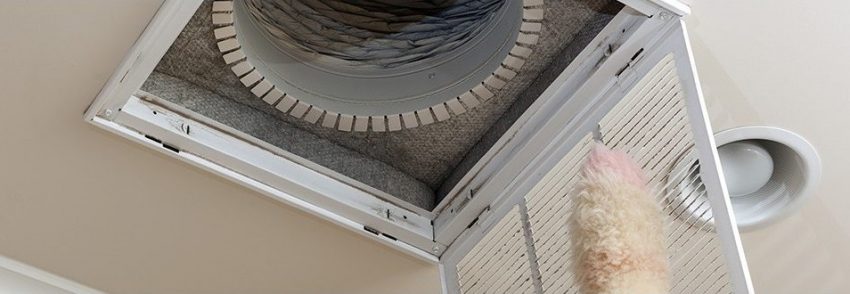
Vents produce different sounds. Different sounds, therefore, require different soundproofing technique. The following are the common noises to air vents.
-
Slamming Noise
The slamming noise is common when turning on or off the air conditioner. It’s probably the sound of air filter slamming against the grille. The slamming sound could be produced due to the following reasons.
- A restrictive air filter that is blocking airflow. As a result, air pressure build-up at the start and end of the air conditioner operation.
- Dirt particles could block the air filter. It happens if the filter has not been cleaned for some time.
- Undersized ducts for the air volume pushed through them.
If you hear your vents producing persistent slamming sound, there could be a problem with the blower assembly. When you hear a persistent slamming sound, seek professional help, and look at the air conditioner. or read this phoenix tech explains on georgebrazilhvac.com
-
Hissing Sound
A hissing sound could mean that there is a problem with the ducts. In most cases, it’s a leakage issue. If there are leakages in the HVAC ducts, the cooling/heating won’t be effective.
The hissing sound noise will be irritating. On the other hand, you will be paying electricity bills for a system that is not working.
Before thinking of soundproofing vents, ensure you check the ductwork. This work should be done by a professional.
-
Popping Sound
You can soundproof the popping sound. It’s not detrimental to the system. The popping sound is common when switching an HVAC system. The popping sound is due to the expansion of metal ductwork.
To soundproof popping sound, line insulations on the ducts. Alternatively, get flexible ducts instead of the rigid metallic ducts.
-
Rattling Sound
A rattling sound in the vents could mean that there are loose objects in the HVAC system. This could be things like loose screws. If you hear screeching noises, it could be particles dragged inside the vent ducts.
You can deal with this noise. If you can, open the duct and remove whatever is making noise. If you cannot open your HVAC, seek help from a professional. Do not soundproof rattling sound.
-
Rapid Clicking sounds
Clicking sounds are normal with vents. You can soundproof them. However, if they are too loud or persist, check your HVAC. It could be that the vents are not getting the right signal. The clicking sound comes from the control panel or compressor.
You have nothing to worry about the clicking sound. Go ahead and soundproof it.
-
Screeching or Squealing Sound
The sound could be produced by a bad motor or belt in your ventilation system. To eliminate this sound, lubricate them. If the sound persists, seek help from a technician.
Alternatively, you can choose to replace the motor or belt.
-
Buzzing Sound
Buzzing sounds comes from a blower or compressor system. The sound could be moving down to the vent ducts. The sound could be happening because your vent compressor is getting old.
If the problem is your compressor, there is little you can do. The only best thing to do is to replace the compressor with a new one. Alternatively, you can find a professional to check it and recommend different things to do on it.
-
A rumbling Sound
Rumbling sound could be as a result of carbon particles stuck in the vent system. The particles are stuck as the HVAC system heats the entire house. The carbon particles block airflows. As a result, the vents produce a rumbling sound.
Therefore, take time to clean your vents regularly. Vacuum the dust off the furnace base, burner, and blower compartment.
The first step is to understand the sound produced by your vents. The second step is understanding the measure to be taken to reduce the noise. It’s important to differentiate sounds that require repair and soundproofing.
The 6 Most Effective Methods to Soundproof Air Vents
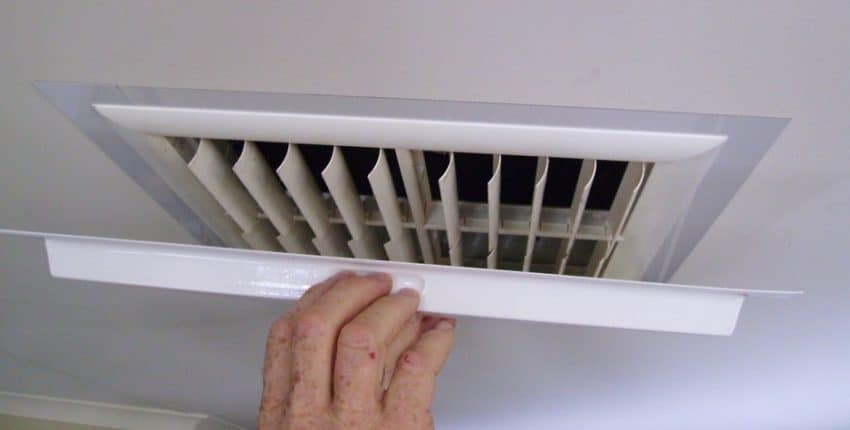
Below are top 6 effective methods to soundproof air vents that we have tested personally & we got the result.
#1. Completely Block or Remove the Air Vents
Air vents are commonly found above doors or windows. Blocking or removing them is the simple way to deal with the vent noise.
To block them, seal the vent duct with soundproofing materials. You can use sheetrock on both sides of the wall. Fill the gaps in the vents and prevent any sound movement. Use water-resistant materials when sealing your vents.
First, think of the air circulation needs in your room. This technique will stop all circulation in your home. Make an informed decision.
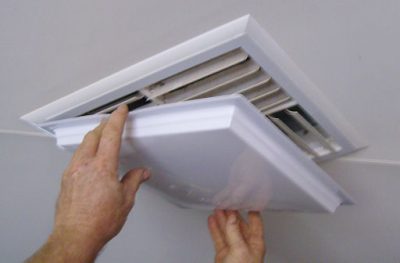
Blocking and removing air vents is also costly. Depending on your house design, you will be required to carry out some construction in the house. After removing the vents, you have to build the wall and make it look like the rest of the house.
This strategy is effective but might not be applicable in all situations. You can only remove vents in rooms that do not necessarily require air circulations.
Always open the windows regularly if you decide to remove air vents in your living room.
To block or remove the air vents, follow the following simple steps.
- Remove the air vent cover from both sides.
- Use an appropriate sealant to fill the vent.
- Coat the inside part of the vent and seal all gaps.
- Return the vent covers where you removed them.
#2. Use Soundproofing Blankets or Curtains
Soundproofing curtains and blankets are easy to use. In most cases, there are no technical skills needed.
To soundproof your vents, you can use heavy moving blankets. Cover the vent openings. You can choose to stick, pin, or hand the blankets on the vents opening. Use the same strategy when using curtains.
You can remove curtains or blankets whenever you want.
Therefore, if you are living in a rented house, this is the best option for you. You only need to buy and hang the blankets or curtains. As a tenant, you cannot do permanent soundproofing. For effective performance, fix the curtains close to the air vents.
You may also like: How to Soundproof a Room with Blankets
Factors to Consider When Buying Blankets and Curtains for Soundproofing Air Vents
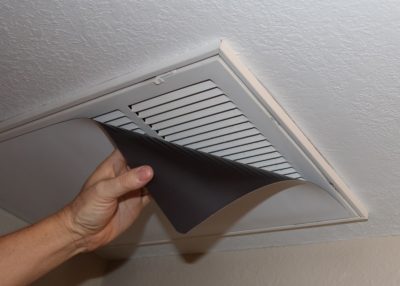
Not every blanket will be useful in soundproofing your air vents. The following are the top factors you should consider before buying any blanket.
- Thickness, Density, and Weight.
The thicker, denser, or weightier the blanket is, the better. Sound will have a hard time penetrating through the blanket.
For better results, use double or triple blanket layers in your soundproofing.
- Size
The size of the blanket/curtains should cover the space you need to soundproof. Don’t leave any space in between blankets.
Blankets come in different sizes. Buy a blanket that fits air vent space.
- Grommets
Grommets are hanging the blankets/curtains on a wall or a rod. Blankets/curtains made for soundproofing purposes, come with grommets.
- Design
Soundproofing blankets/curtains are made in different designs. Some blankets are designed for tranquil places such as offices. The blankets designs used in offices may not be necessary for homes.
- Budget
Soundproofing blankets/curtains come at different prices. As you choose your best blanket/curtains, settle for a blanket that is within your means. As you factor the budget, don’t think of the blanket/curtains alone. Think of other soundproofing equipment that would be needed.
Soundproofing blankets and curtains are available on Amazon. We have tested the following curtains and blankets.
Buy them on Amazon.
Two Blankets that We Have Used
1. Sure-Max 4 Moving & Packing Blankets
[asa2_img tpl=”Flat_box_horizontal”]B01GK6JRII[/asa2_img]- Ultra-thick
- Size: 80″ x 72″
- Weight: 65 lb/dz
- Professional Quilted Shipping Furniture Pads
2. Supreme Mover Moving Blankets
[asa2_img tpl=”Flat_box_horizontal”]B00JWU3QKK[/asa2_img]- Size: 72 inch x 80 inch
- Quilted premium cotton
- 3-inch black woven binding
- Weight: 7.5 pounds each
Two Curtains that We Have Used
[asa2_img tpl=”Flat_box_horizontal”]B01CS31NDE[/asa2_img]- Noise Reducing Thermal Insulated Solid Ring
- Top Blackout Window Curtains/Drapes
- Two Panels,42 x 84 Inch.
- Thermal Insulated
- Noise Reducing
- Size: 52W x 54L Inch
#3. Make a Sound Maze in the Air Vent
By now, you have to admit that it’s difficult to block sound and have airflow control through the vents. This is the reason most people sacrifice one for the other.
However, the sound maze is the solution. With a sound maze, you get to soundproof your room and also achieve airflow control in your house. You just create a sound maze in your air vents, and everything else functions perfectly.
A sound maze is insulation against waves and noise. They are created in a way that makes sound difficult to travel through them.
The mazes are created with turns and sharp corners inside. They only leave spaces that allow air flow. The design ensures that both sound reduction and maintain airflow.
To construct a sound maze you will need the following tools. You can buy the tools from Amazon.
- Screwdrivers: To remove heavy vent covering.
- Thin plywood pieces: Buy a few that measure less than an inch. ¼ inch is the best size.
- Gorilla Wood Glue: Needed for sticking together wood pieces.
- Foam material or acoustic cotton.
- A ruler
- A pair of scissors
#4. Use a Soundproofing Sealant on the Air Vent
One of the quickest and easiest methods is using soundproofing sealants. The sealants are available on Amazon. The best part is that they are cheap. You will need $10 on average to get them.
Spray the foam sealant on the vents. It will take you a few minutes to get the job done.
For effective performance, remove the vent cover. Fill the inside gaps on either side of the duct. Leave no opening. Once done, return the vent covers.
#5. Repair or Upgrade Your HVAC
As discussed above, your vent could be making noises due to a breakdown in your HVAC. Therefore, inspect the source of the noise in your vent system. And deal with the source rather than just soundproofing.
This is the best technique for most of the vent sounds.
If you have an old-school HVAC system, upgrade it. The old technology is noisy. Check on Amazon the best available options for HVAC.
Reduce the noise by buying a new system. If you can repair the old one, do it. Deal with the source of the sound. The modern systems are cost-effective. They consume less energy and come with great soundproofing materials.
If you choose to upgrade your HVAC, consider buying either of the following systems from Amazon.
Pioneer WYS012-17 Air Conditioner
[asa2_img tpl=”Flat_box_horizontal”]B01DVW6BG0[/asa2_img]- Ultra-silent and beautifully built
- Use for both cooling and heating
- Comes with every needed component
Classic America Ductless Wall Mount Mini Split Inverter Air Conditioner
[asa2_img tpl=”Flat_box_horizontal”]B071DMQZHP[/asa2_img]- The indoor unit has a modern and sleek appearance.
- Classic America Mini Split Inverter Ductless Air Conditioner/Heat Pump.
- Comes with Installation Kit
#6. Insulate Duct on Your Air Vents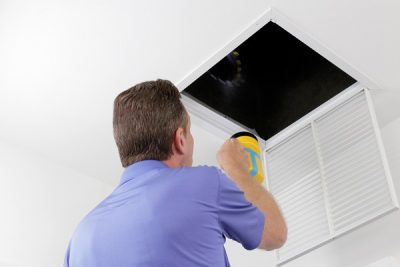
Insulating ducts is a cost-effective soundproofing technique for air vents. Use lining materials to insulate the ducts. The material would absorb all the sounds bouncing on the duct walls.
Duct liners will become sound dampers for the air vents. The liners are cheap and available on Amazon.
Most importantly, seek help from a professional when insulating the ducts. If the insulations are poorly done, you might block the airflow in your room.
Check the following Duct Liners on Amazon.
[asa2_img tpl=”Flat_box_horizontal”]B01DBF3DRC[/asa2_img]- Absorbs bouncing sound
- 220 degrees Fahrenheit
- -297 degrees Fahrenheit
- Bonded Glass Fiber Blanket
- Noise Absorbing
- 1 Inch Thick
Factors to Consider When Choosing Soundproofing Products
- Material
There are four categories of soundproofing materials. They are; dampening, vibration isolation, transmission loss material, and absorption materials. The first two are for soundproofing solid-borne noise. The other materials are used to soundproof airborne sounds.
Therefore, understand the nature of the sound you want to soundproof. Choose an appropriate type of material.
- Environmental Factors
Some soundproofing materials are suitable for certain environments than others. Before choosing any of the soundproofing material, consider the following.
- Moisture level in your room
- Amount of grease, oil, and dirt.
- Temperatures
- The Nature of the Vent Sound
As discussed earlier, air vents produce different sounds. These sounds need to be soundproofed using different techniques. The material chosen will determine the effect it will have on a particular type of sound.
- Budget
This it’s obvious. Choose soundproofing techniques that are within your budget.
Parting Shot
Having a silent and peaceful home is essential. It’s equally important to have good airflow in your room. Therefore, consider the needs of both airflow and silence in your house. Try to have a balance between the noise and the airflow. Choose either of the methods above to soundproofing air vents. Buy the recommended soundproofing materials on Amazon and enjoy living in a quiet home.

